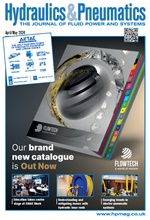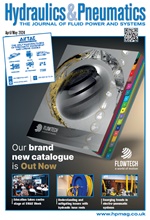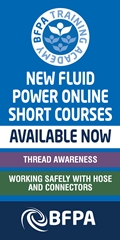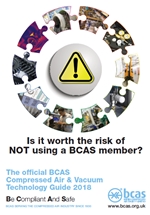The role of wet blasting in the post-processing of AM parts

Colin Spellacy, Head of Sales, Rösler UK/ AM Solutions, looks at the role of wet blasting in the post-processing of Additive Manufacturing parts.
Additive manufacturing (AM) (the industrial production name for 3D printing) continues to disrupt the traditional manufacturing paradigm, and every day secures a more robust foothold as a production technology. The reason for this is driven by advances in build processes that promote increases in speed, accuracy, and repeatability of production, and therefore increased yield ratios.
As is now well-known and accepted, AM is important as it facilitates the creation of geometrically complex parts and components, reduces waste, and allows for the creation of lighter structures with an obvious importance in the automotive, aerospace, and medical sectors. AM also allows for the simple production of replacement parts impossible or uneconomical to replace using traditional processes, meaning that machines can be repaired not replaced. All such advantages along with AM’s ability to democratise and localise manufacturing with all that implies in terms of shortened and domestic supply chains means that as a technology its future is assured.
AM & post processing
But AM is not perfect, and one area where significant issues reside is in the surface finish of AM parts as they come out of the build chamber or off the build plate. Whether plastic or metal, AM produced parts require primary postprocessing processes to remove powder or physical supports. But even then, AM parts are characterised by relatively poor look and feel, layer steps often being obvious, and surface roughness often being significantly high, which can affect aesthetics as well as functional performance. This means that in most instances, they require secondary postprocessing to enhance surface form and finish.
With a significant part of the cost of a finished end-use AM part being the cost of post processing, the fight is on to develop efficient, repeatable, and automated AM post processing technologies. Many companies are working on and researching new bespoke AM post-processes, sometimes with impressive results, but usually restricted in usefulness to particular materials or geometries, and almost all being highly priced and over-engineered.
Because of this, an increasing number of traditional industry finishing processes are being refined and positioned for the post-processing of additively manufactured plastic and metal parts. Several mass finishing technologies are already used such as vibratory finishing, tumble finishing, and shot blasting, and shot peening and chemical smoothing technologies all maintain a foothold.
A finishing/ post-processing solution that is largely neglected when looking at AM parts, and that is wet blasting. Wet blasting is a clean, reliable, repeatable, and accurate process which creates parts with a consistently superior surface finish than alternative processes, and which is ideal for parts made using direct metal laser sintering (DMLS) and selective laser sintering (SLS).
-
Smart Manufacturing & Engineering Week
05 - 06 June, 2024
NEC, Birmingham -
HILLHEAD 2024
25 June, 2024, 9:00 - 27 June, 2024, 16:00
Hillhead Quarry, Buxton, Derbyshire UK










